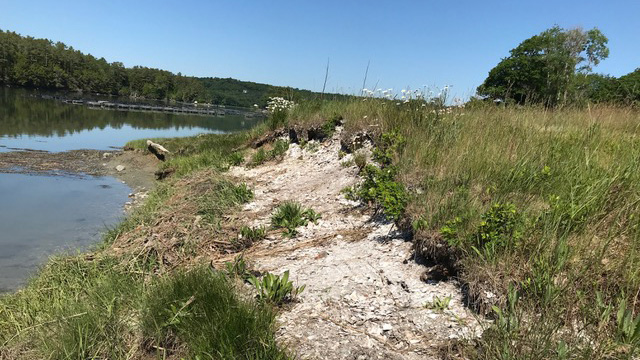
UMaine researchers co-author Smithsonian study about Indigenous oyster consumption
Bonnie Newsom, assistant professor of anthropology at the University of Maine and member of the Penobscot Indian Nation, and Alice Kelley, research associate professor at the Climate Change Institute, co-authored a study showing that oyster fisheries were intensively yet sustainably harvested by Indigenous peoples long before European settlers arrived.
The study, co-led by Smithsonian’s National Museum of Natural History anthropologist Torben Rick, and Temple University anthropologist and former Smithsonian postdoctoral fellow Leslie Reeder-Myers, analyzed the archaeological records at sites across North America and Australia, specifically looking at the accumulations of oyster shells that are also known as middens or mounds. The researchers found that some of the oldest oyster middens in California and Massachusetts date back more than 6,000 years.
The researchers found that the Indigenous groups in these locations harvested and ate immense quantities of oysters in a manner that did not cause the bivalves’ populations to suffer and crash. If the fishery is overextended, the shells tend to get smaller, but the studies of Indigenous oyster fisheries have not found widespread evidence of this shrinking shell pattern, suggesting the shellfish populations were generally healthy.
“This paper shows that shell heaps, once thought of simply as trash heaps, are actually rich archives of cultural and paleoenvironmental information, and likely were an important part of Indigenous life at the time of formation,” Kelley says.
The paper expands on a 2004 paper documenting the collapses of 28 oyster fisheries located along the east and west coasts of North America and Australia’s east coast. The previous research’s timeline in each location begins with European colonists’ creation of commercial oyster fisheries. This study deepens the historical context of those modern declines by documenting Indigenous oyster fisheries that existed prior to European colonization.
The findings suggest that studying these ancient, sustainable fisheries offers insights that could help to restore and manage estuaries today. Furthermore, the authors of the study assert that Indigenous peoples in these locations had deep connections to oysters and that their living descendants are long overdue to be involved in decisions about how to manage what is left of this coastal resource.
“This study showcases the value of Indigenous shell heap sites in Maine as important repositories of information on past lifeways and how that information may be relevant to our contemporary shellfish harvesting practices,” Newsom says.
Arthur Spiess, senior archaeologist at the Maine Historic Preservation Commission, was also among the study’s co-authors who made contributions to the research in Maine. The study was published May 3 in Nature Communications.
Contact: Sam Schipani, samantha.schipani@maine.edu
